You’re about to discover how to transform your living space into a thriving indoor garden, even if you’ve never kept a plant alive before. Indoor plants not only purify your air but also create a calming atmosphere that enhances your home’s aesthetic appeal. From selecting the right low-maintenance varieties to mastering strategic placement techniques, these ten beginner-friendly tips will help you cultivate a beautiful, sustainable indoor garden that requires minimal effort to maintain.
Contents
- 1 Choose Low-Maintenance Plants for Success
- 2 Master the Art of Strategic Plant Placement
- 3 Create a Vertical Garden With Wall Planters
- 4 Select the Right Pots and Containers
- 5 Balance Light Requirements in Your Space
- 6 Group Plants for Visual Impact
- 7 Mix Plant Sizes and Textures
- 8 Set Up a Simple Watering Schedule
- 9 Style Your Windowsills With Sun-Loving Plants
- 10 Add Plant-Friendly Furniture and Accessories
Choose Low-Maintenance Plants for Success
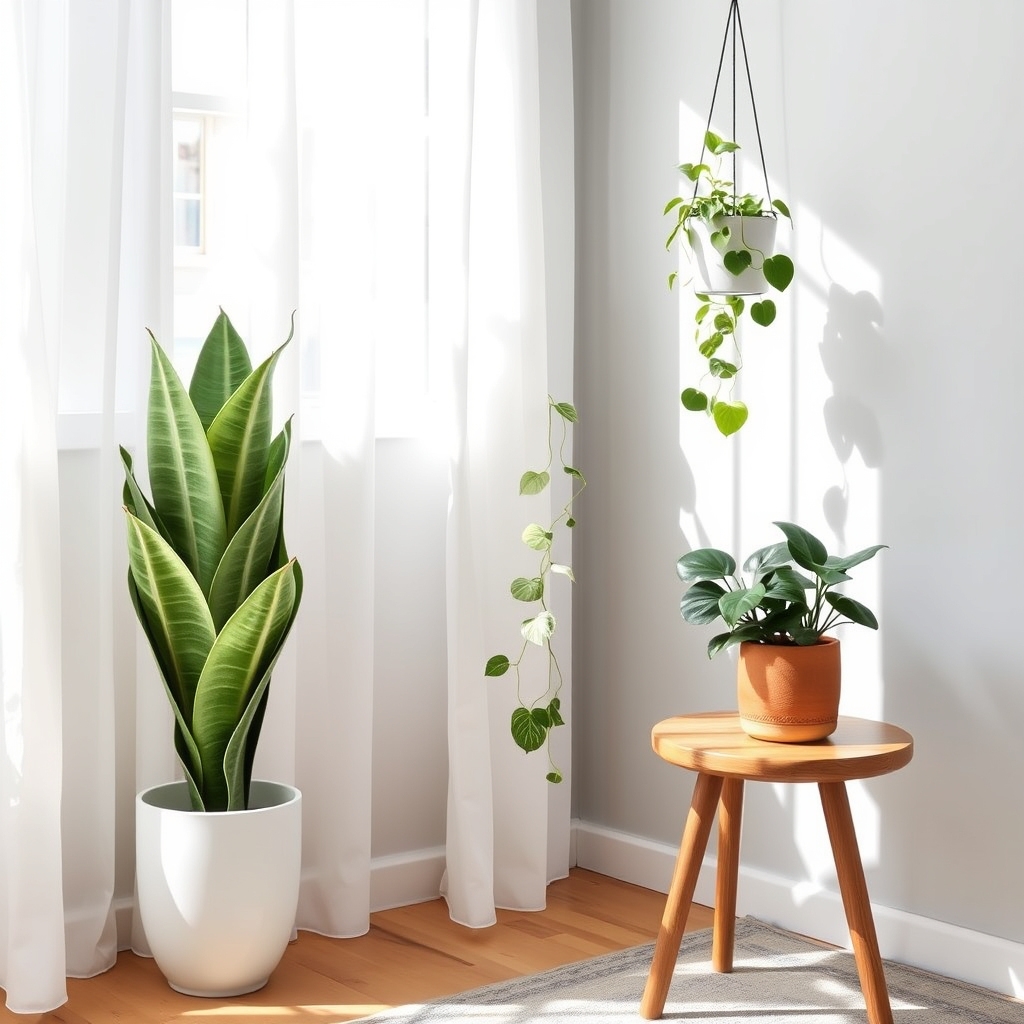
Low-maintenance plants are ideal choices for indoor decoration, especially for beginners or busy individuals. These plants can thrive with minimal care, irregular watering schedules, and various light conditions.
Popular low-maintenance options include:
- Snake Plants: Tall, architectural leaves with striking patterns
- ZZ Plants: Glossy, dark green foliage that tolerates low light
- Pothos: Trailing vines with heart-shaped leaves
- Spider Plants: Arching leaves with baby plants on long stems
- Chinese Evergreen: Variegated leaves that survive in dim conditions
These plants share key features:
- Drought-tolerant
- Adapt to different light levels
- Resist common pests
- Survive in average indoor temperatures
- Forgive occasional neglect
- Require minimal pruning
- Thrive in standard potting soil
Selecting these hardy plants increases success rates for new plant parents and creates lasting indoor greenery with minimal effort.
Master the Art of Strategic Plant Placement
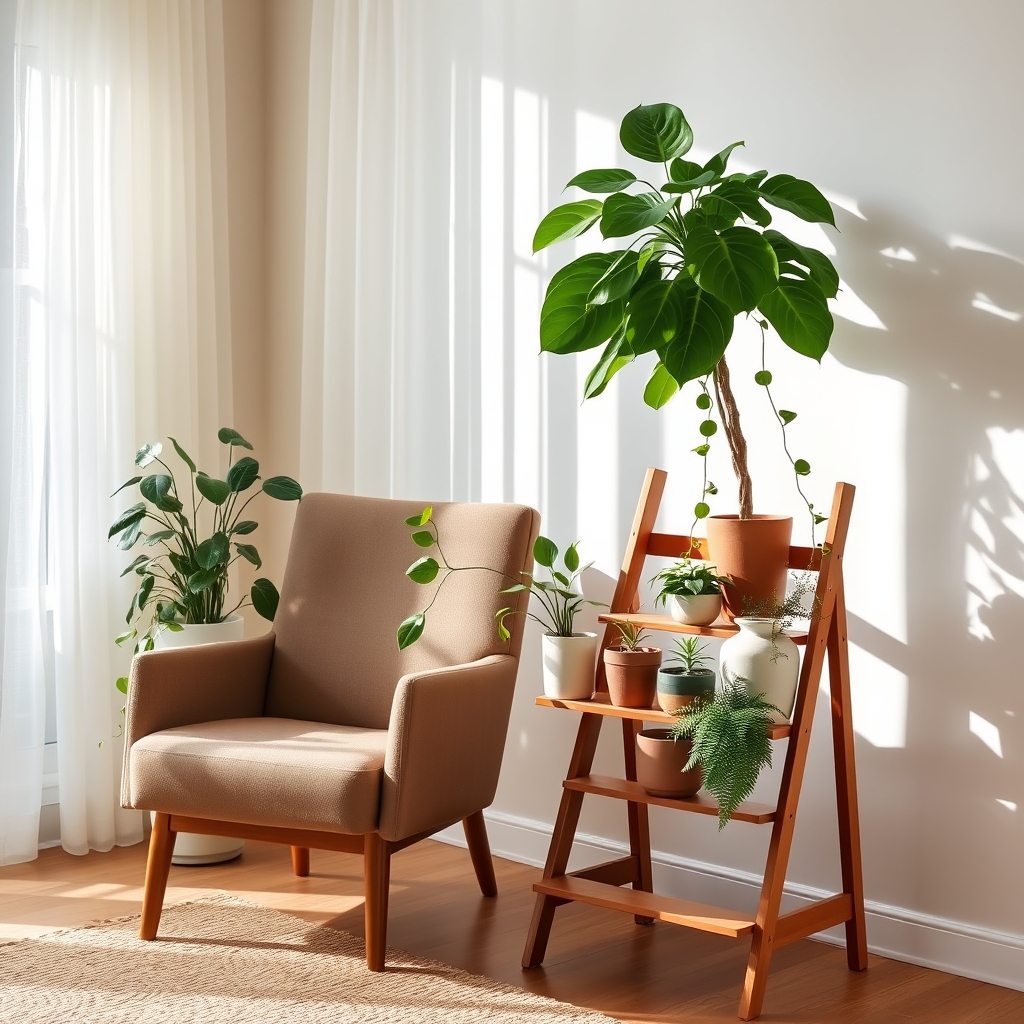
Strategic plant placement is the deliberate positioning of indoor plants to maximize both aesthetic appeal and growing conditions.
Plants are arranged based on light requirements, size variations, and visual composition principles. Taller plants typically serve as focal points or anchor pieces in corners and behind furniture, while smaller plants occupy tabletops, windowsills, and shelves.
Cascading varieties hang from ceiling hooks or elevated surfaces, creating vertical interest. Plants with similar care needs are grouped together, making maintenance more efficient.
The arrangement considers traffic flow, ensuring plants don’t obstruct walkways while creating natural divisions between living spaces. Layering different heights and textures creates depth, while matching pot styles maintains visual cohesion throughout the space.
Create a Vertical Garden With Wall Planters
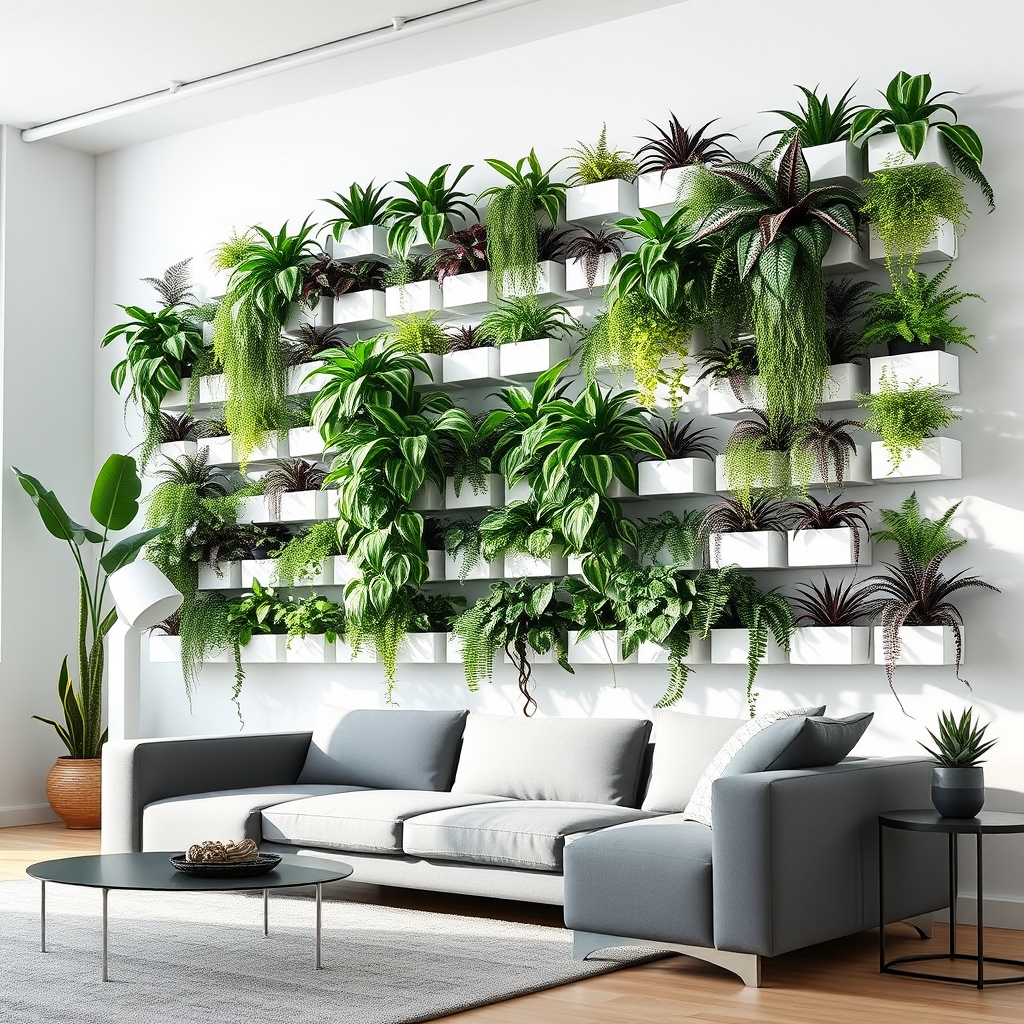
Vertical gardens with wall planters transform empty wall space into living, green displays by mounting plants in organized arrangements.
These installations typically feature multiple planters attached directly to walls, creating a cascading or grid-like pattern of foliage. Wall planters come in various styles, from pocket planters and modular systems to floating shelves and mounted containers, allowing plants to grow upward rather than outward.
This space-saving solution adds natural texture and dimension to interior walls while maximizing floor space.
Plants can be arranged in patterns or grouped by species, creating visual interest through different leaf shapes, colors, and sizes.
Select the Right Pots and Containers
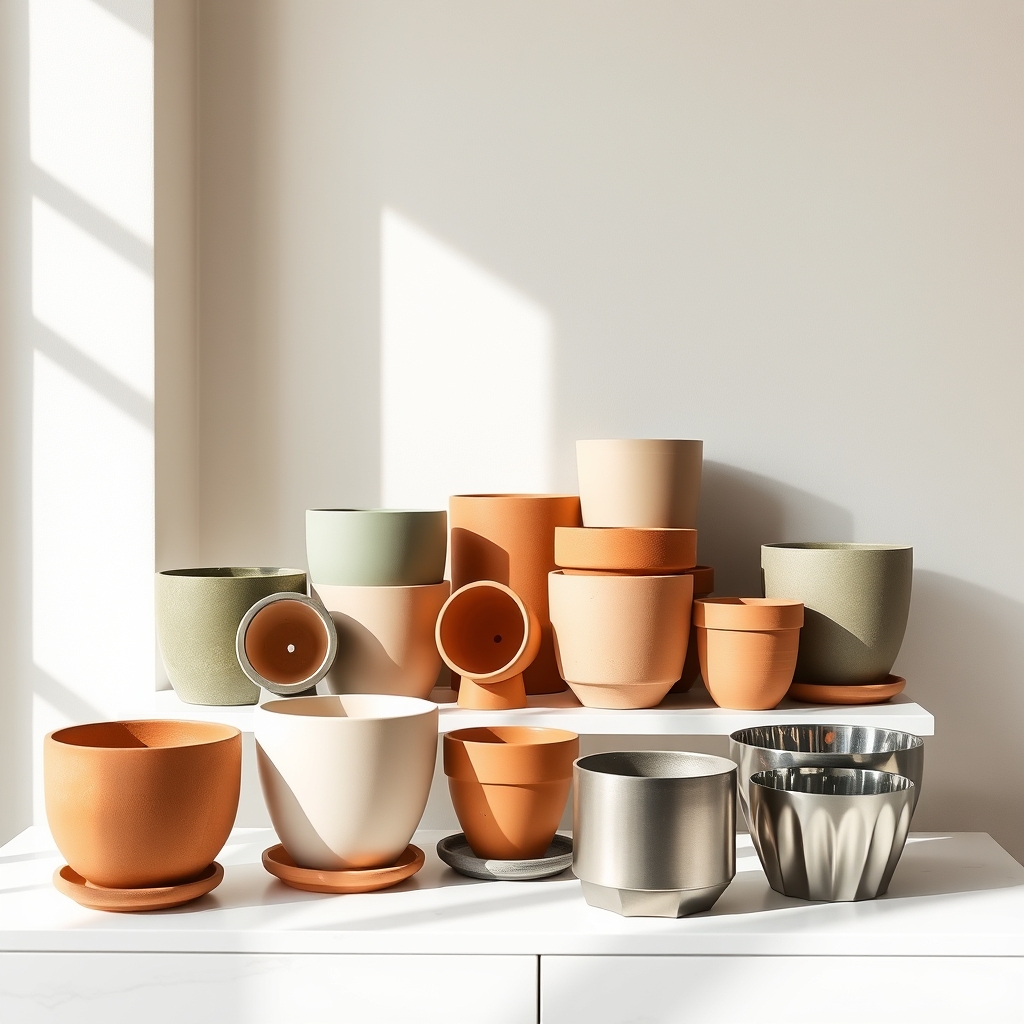
Selecting the right pots and containers involves choosing vessels that complement both the plant’s needs and your interior design. Containers come in various materials like ceramic, terracotta, metal, and plastic, each offering different benefits for plant health.
Size matters – pots should be proportional to the plant and have adequate drainage holes. Design-wise, pots can range from minimalist modern designs to ornate vintage styles, with colors and textures that either blend with or accent your room’s decor.
Key considerations include:
- Material porosity for proper root aeration
- Drainage capability to prevent root rot
- Size appropriate for plant growth
- Style compatibility with home decor
- Weight and durability of container
- Base plates or saucers to protect surfaces
The right container not only ensures plant health but also serves as a decorative element that enhances the overall aesthetic of your indoor space.
Balance Light Requirements in Your Space

Balancing light requirements in your space involves strategically placing plants according to the natural lighting conditions in different areas of your home.
Windows facing different directions provide varying light intensities – south-facing windows offer bright direct light, east and west windows provide medium light, while north-facing windows deliver low indirect light.
Plants should be grouped based on similar light needs: place sun-loving plants like succulents and cacti near sunny windows, while shade-tolerant species like pothos and peace lilies can thrive in dimmer corners.
For areas with insufficient natural light, grow lights can supplement lighting needs.
Consider seasonal changes in light patterns and adjust plant positions accordingly. During winter months, when sunlight is less intense, move plants closer to windows.
In summer, some plants may need protection from harsh direct sunlight through sheer curtains or strategic placement further from windows.
Room layout and furniture placement also affect light distribution. Avoid placing tall plants where they might block light from reaching smaller specimens.
Rotating plants regularly ensures even growth and prevents them from permanently leaning toward light sources.
Group Plants for Visual Impact
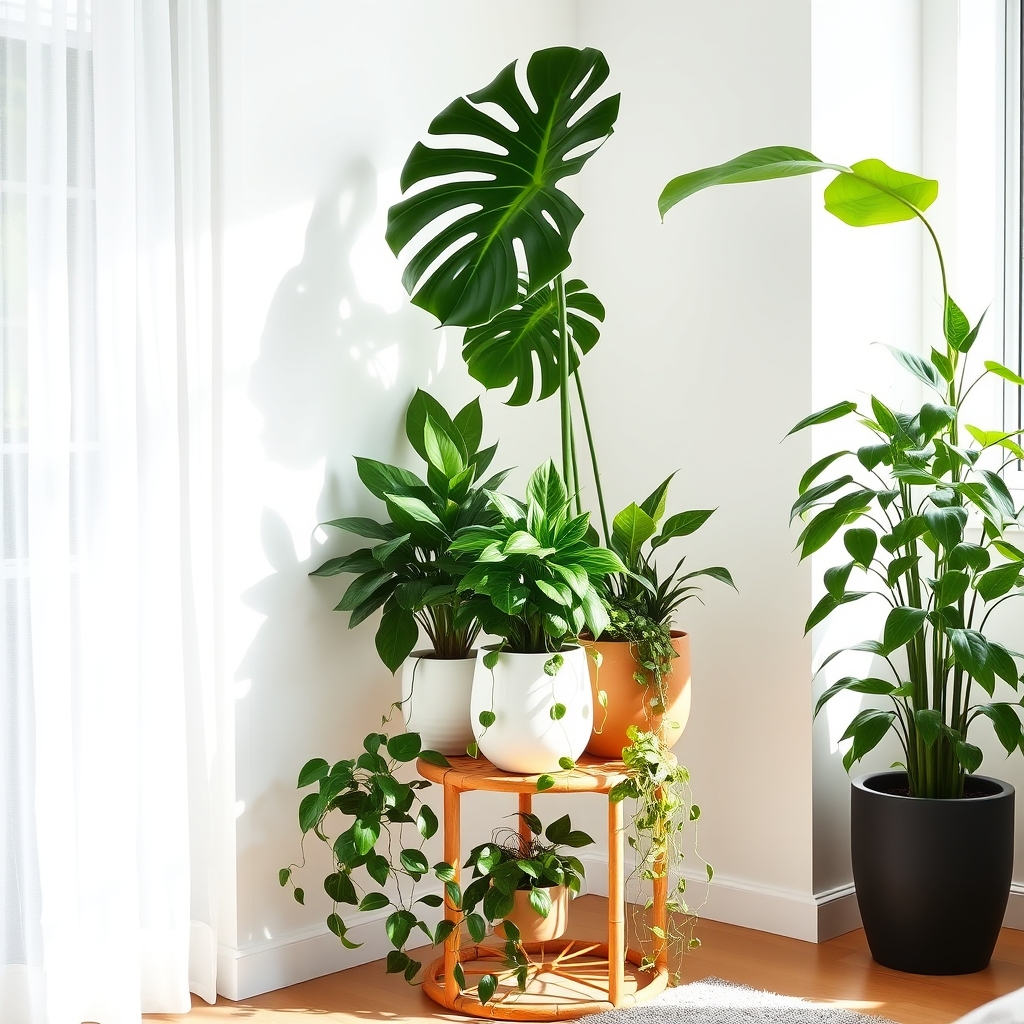
Grouping plants together creates striking visual displays that command attention in any indoor space. Clusters of 3-5 plants at varying heights establish dynamic layers and depth, while combining different leaf shapes, textures, and shades of green adds rich visual interest.
Plants can be arranged on tiered stands, shelves, or directly on the floor using pots of different sizes. Effective groupings often pair tall statement plants like fiddle leaf figs with medium-height plants and trailing varieties to create a natural, cascading effect.
The collective impact of grouped plants makes a stronger design statement than individual specimens scattered throughout a room, while also creating a lush, garden-like atmosphere indoors.
Mix Plant Sizes and Textures
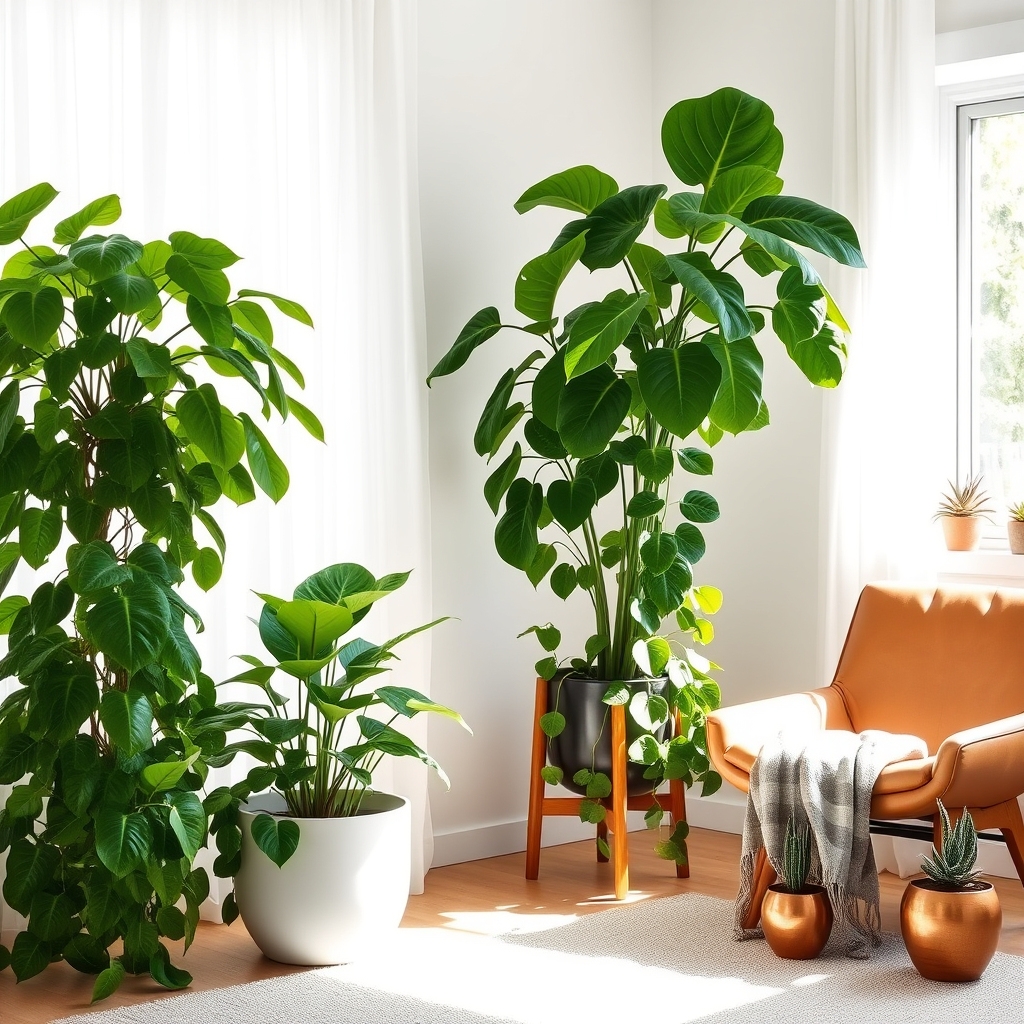
Mixing plant sizes and textures creates visual interest and depth in indoor spaces through strategic placement of diverse foliage.
Tall, statement plants like fiddle leaf figs or palm trees can serve as focal points, while medium-sized plants fill the middle ground, and smaller varieties add detail at lower levels.
The combination of different leaf shapes – from broad, glossy leaves to delicate, wispy fronds – adds dimension and contrast.
Layering smooth, waxy leaves alongside feathery or variegated foliage creates a dynamic display that mimics natural plant environments.
This approach prevents monotony and draws the eye through the space, making rooms feel more organic and professionally styled.
Set Up a Simple Watering Schedule

Setting up a simple watering schedule involves creating a consistent routine for watering indoor plants based on their individual needs. A well-organized schedule typically features a calendar or chart that tracks watering days, specific plant requirements, and seasonal adjustments.
This system can be maintained through physical planners, smartphone apps, or simple sticky note reminders placed near plant locations.
Key elements include:
- Designated watering days for different plant groups
- Notes on water quantity requirements
- Seasonal adjustments for winter/summer needs
- Monitoring system for soil moisture levels
- Simple checkoff system to track completed waterings
Unique features:
- Customizable to match individual plant needs
- Adaptable for varying home environments
- Can incorporate water quality preferences
- Allows for fertilization schedule integration
- May include misting requirements for tropical plants
Style Your Windowsills With Sun-Loving Plants
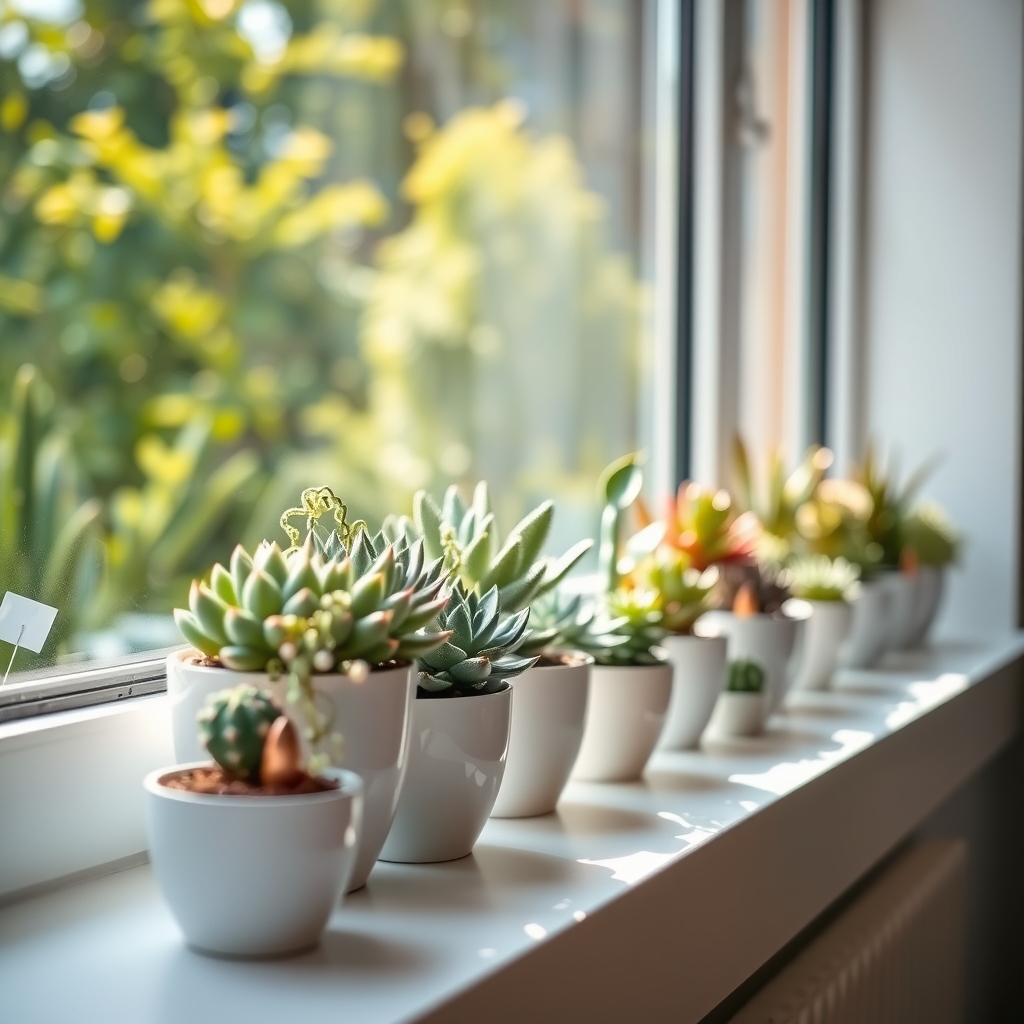
Style Your Windowsills With Sun-Loving Plants focuses on arranging plants along window ledges to create an eye-catching indoor garden display.
Windowsills make ideal locations for sun-loving plants, offering them direct natural light while transforming an often underutilized space into a decorative focal point.
Key characteristics:
- Plants arranged in a linear formation along the window length
- Mix of heights and textures creates visual interest
- Typically features succulents, cacti, and other light-loving varieties
- Plants displayed in coordinating pots or containers
- Natural backdrop of outdoor views enhances the display
Unique features:
- Maximizes natural light exposure for optimal plant growth
- Creates a living curtain effect
- Merges indoor and outdoor environments
- Provides easy access for plant care and maintenance
- Serves dual purpose as both decor and mini garden space
Add Plant-Friendly Furniture and Accessories
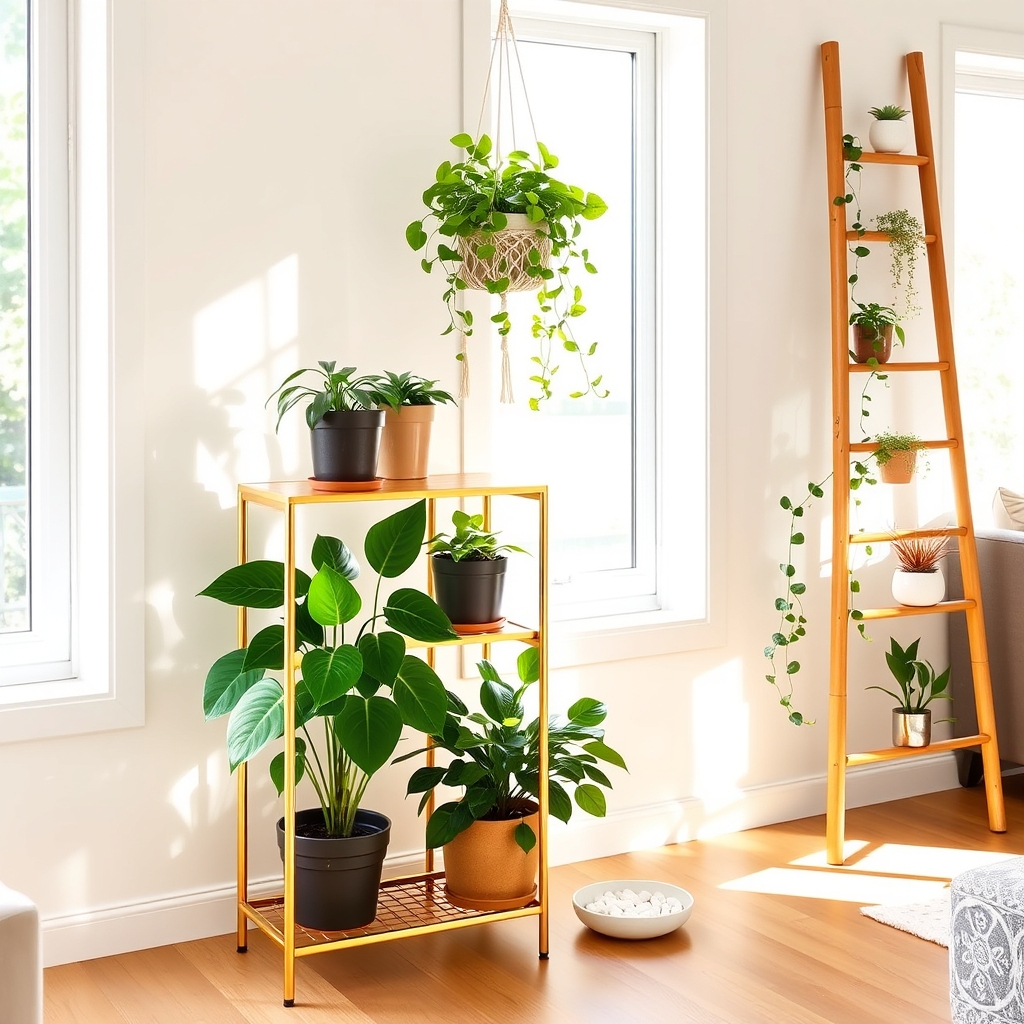
Plant-friendly furniture and accessories create dedicated spaces and support systems for indoor plants while enhancing room aesthetics.
These elements include plant stands of varying heights, decorative shelving units with adequate light exposure, hanging macramé holders, windowsill extenders, and rolling plant caddies.
Wall-mounted planters, tiered displays, and corner plant ladders maximize vertical space while creating visual interest.
Essential accessories incorporate drainage trays, humidity trays filled with pebbles, grow lights for dark corners, and decorative stakes or moss poles for climbing plants.
The furniture pieces often feature water-resistant materials like metal, bamboo, or treated wood, and many items serve dual purposes as both plant support and stylish home decor.
